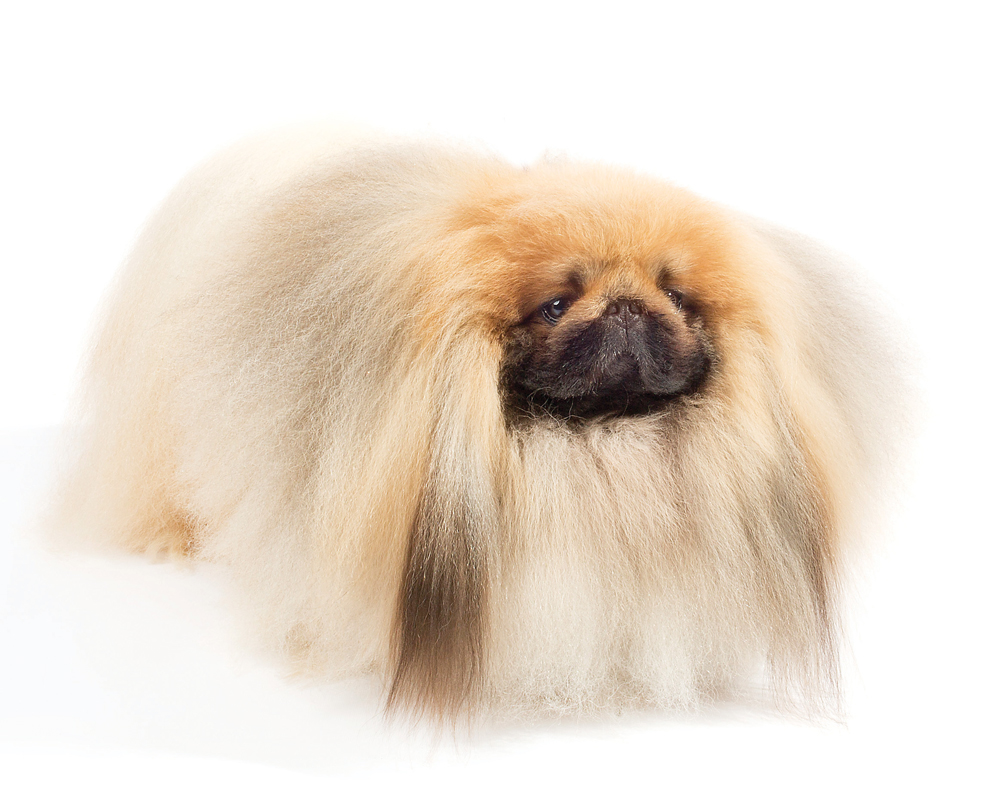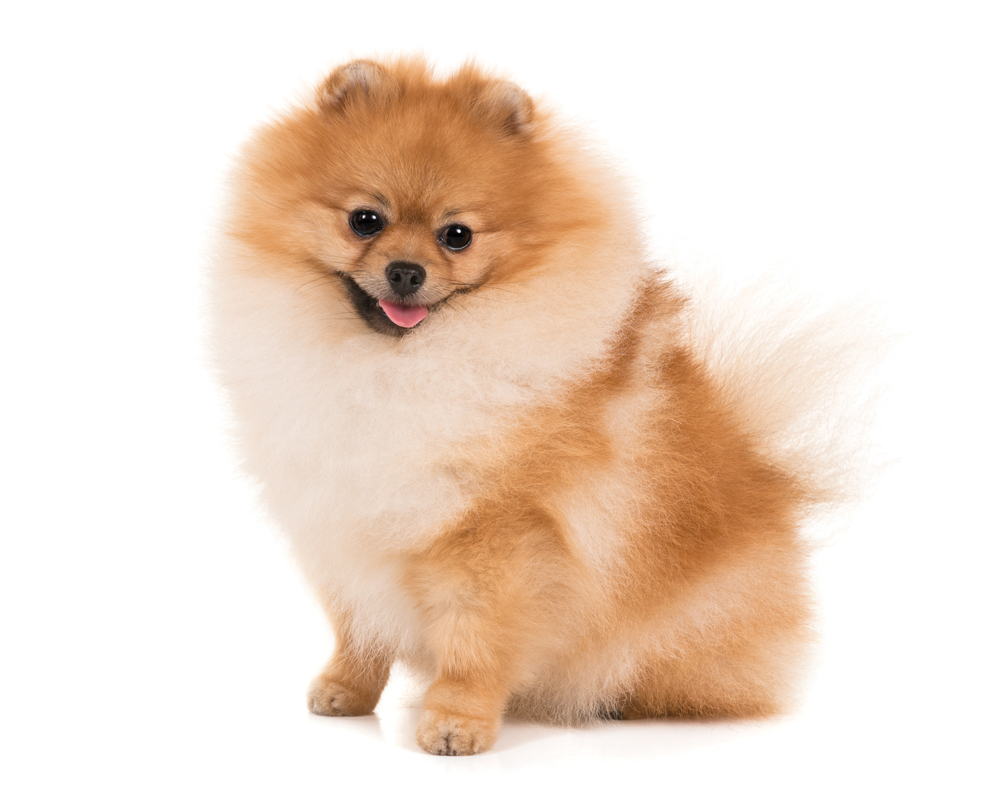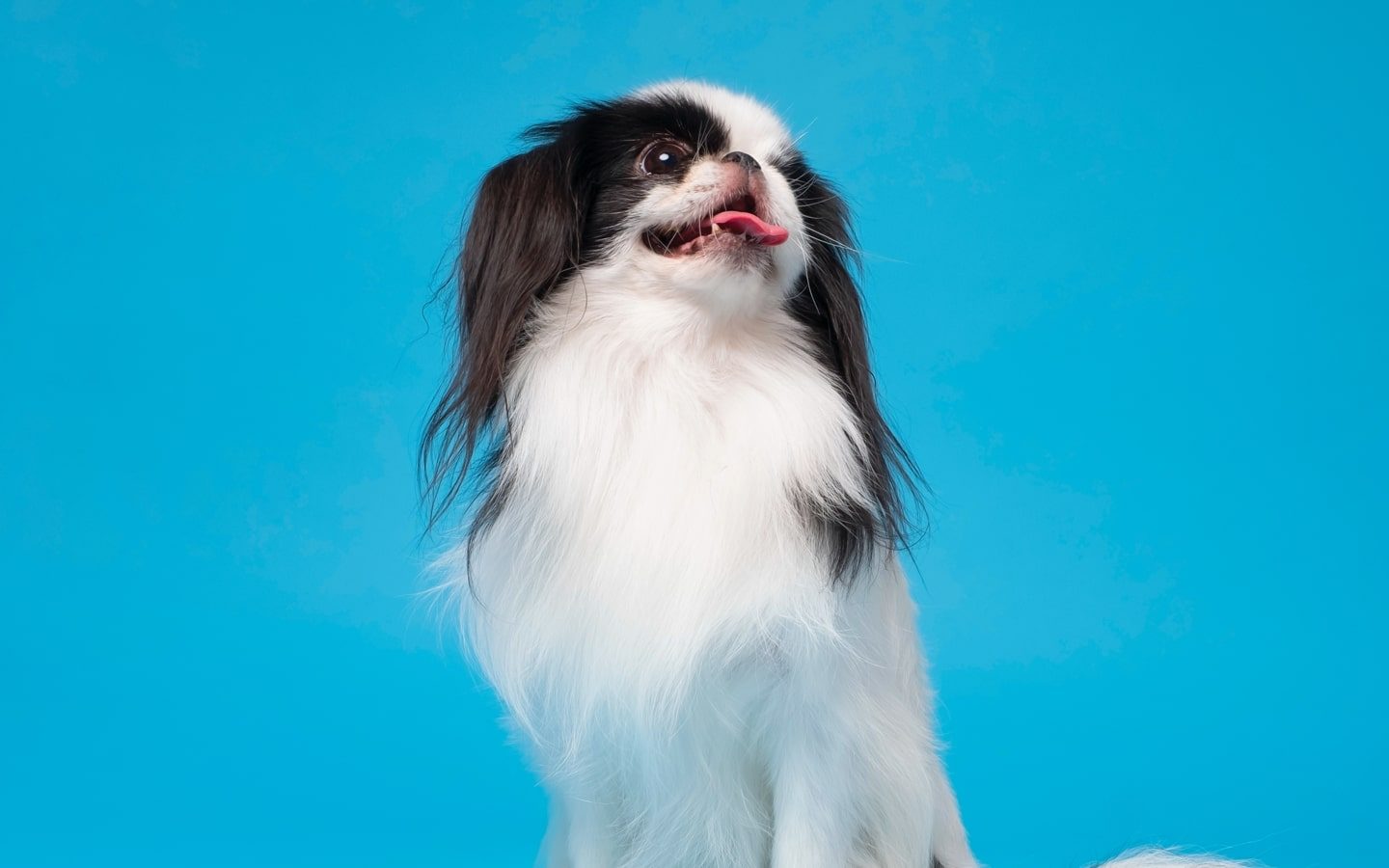
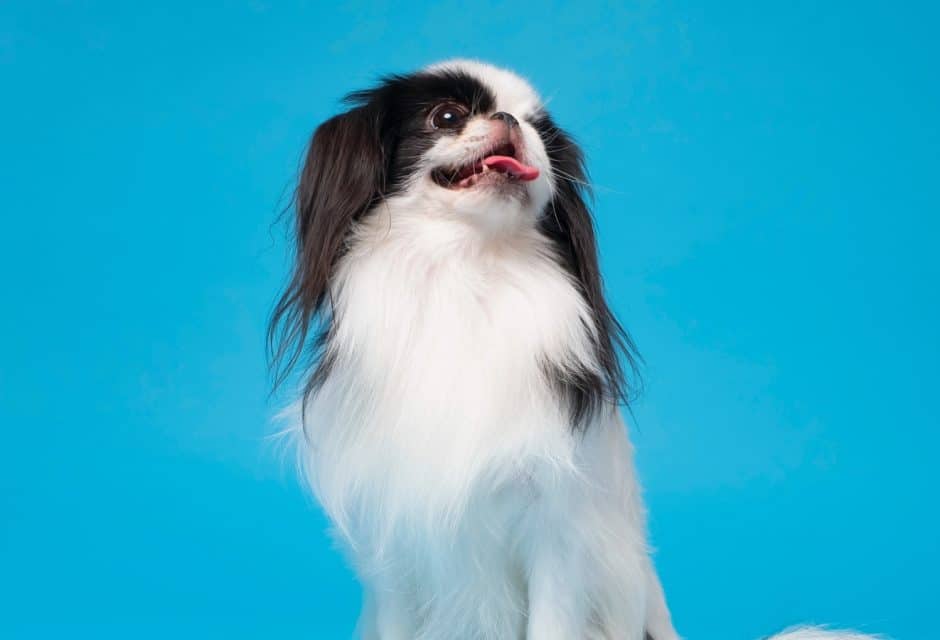
The Japanese Chin
This utterly charming, affectionate breed will steal your heart!

With that astonished expression and elegant gait, this charming little dog can’t help but make people smile. This is an adorable breed with noble carriage that hints at aristocratic origins. Is the Japanese Chin right for you? Let’s find out.
Early History
Despite what the name may suggest, the Japanese Chin did not originate in Japan. The breed’s actual origin was in China… or perhaps Korea. Like many ancient breeds, its roots are debated. What’s clear is that these dogs are nobility—they were presented to Japanese royalty as gifts during the Silla Dynasty in 732 AD. Royal family members owned, cherished, and developed the breed we know today.
The Japanese Chin was a well-kept secret, all but unknown outside of Japan until the mid-1800s, when trading between Japan and other countries reopened. Often, one of these special little dogs was presented as a gift to solidify trade relations. As a result, the Japanese Chin slowly made its way to various parts of the world where, not surprisingly, the breed got plenty of attention.
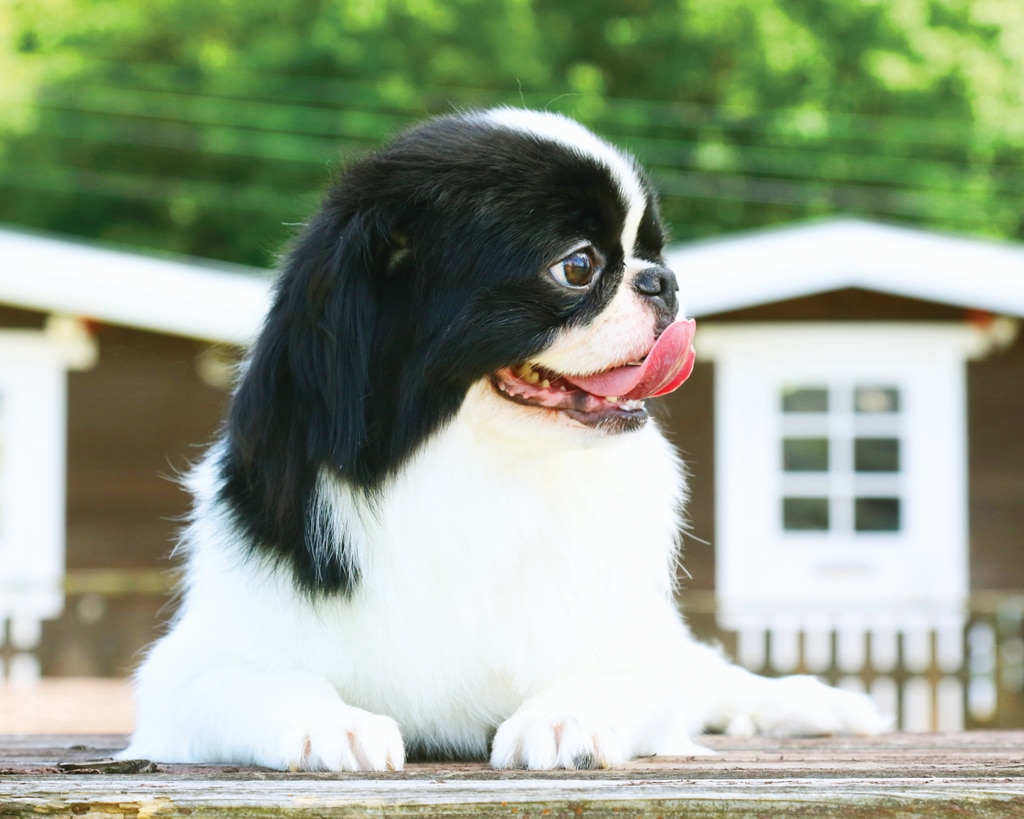
Rin.Seiko/Shutterstock
Most Popular Dogs in the US
According to the most recent AKC registration statistics (2022)
[1] French Bulldog
[2] Labrador Retriever
[3] Golden Retriever
[4] German Shepherd
[5] Poodle
[6] Bulldog
[7] Rottweiler
[8] Beagle
[9] Dachshund
[10] German Shorthaired Pointer
[105] Japanese Chin
Dogs of Royalty
As they’d been in Japan, the Chin was a prized possession in England, serving primarily as a doting lapdog for royalty and members of the aristocracy. In 1863, King Edward VII presented his wife with a Japanese Chin. She was positively besotted with her pet and became a lifelong Chin fancier. Her devotion to the breed was pivotal in its increasing popularity in Europe and North America.
Get to Know the Japanese Chin
- Small– gentle handling is important
- Calm and confident
- Often described as cat-like
- Lap-dog extraordinaire
- A real performer who likes to learn tricks
- Eager to please, but has a stubborn streak
- Medium energy– happy to simply snuggle
Evolution of the Standard
The Japanese Chin was recognized by the American Kennel Club (AKC) in 1888. Breed Standard notes this is a small dog with a height ranging between eight and 11 inches at the withers. The head is wide, and the body is straight. A silky coat drapes elegantly over the body, and the long tail—often described as having the appearance of a flower in bloom—is carried over the back. The AKC accepts the breed in black and white, red and white, or black and white with tan points. The mark on the forehead—typically a blaze or line—is believed by many to represent the touch of Buddha.
An alert, inquisitive expression is key to the breed, and emphasized in the Standard. Without question, the Japanese Chin has one of the most perpetually astonished faces in the dog world. Those large, round eyes simply exude character, as does this breed’s personality!
Fun Facts
+ The Japanese Chin actually originated in China.
+ They were the companions of royalty.
+ They were bred to be as small as possible—small enough to fit in the sleeve of a woman’s kimono.
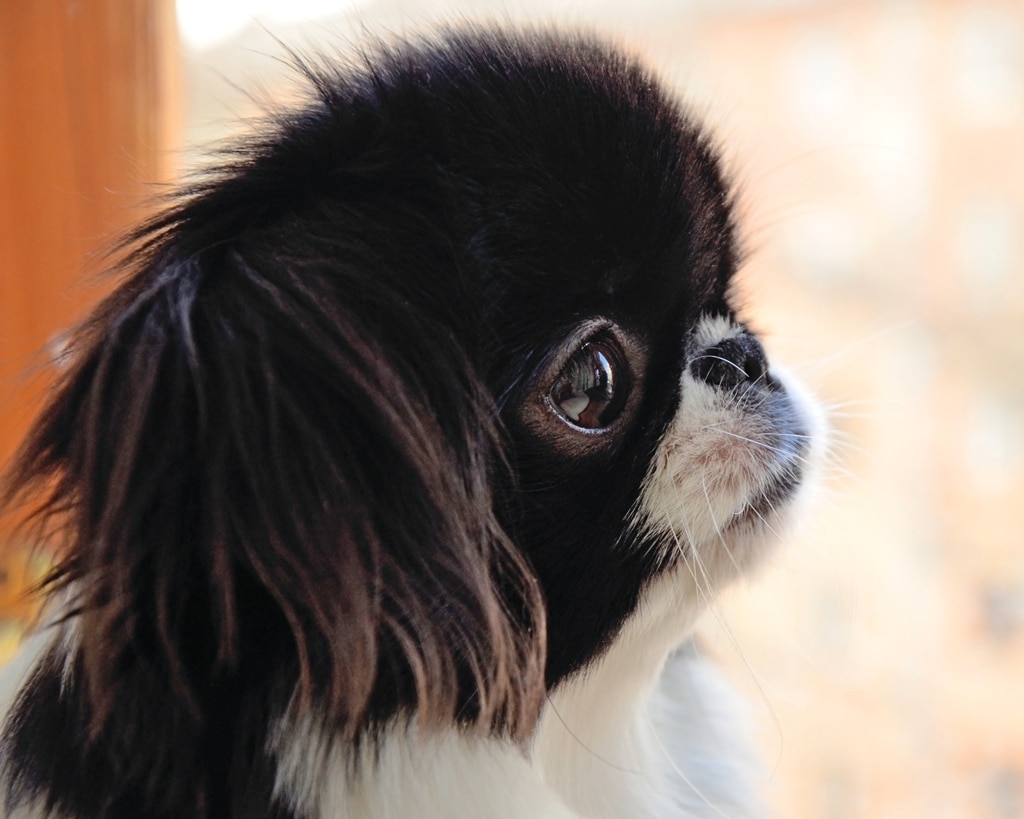
Dmiytro/Shutterstock
What Is It Like to Live with a Japanese Chin?
You often hear people talk about the Japanese Chin as cat-like. This reputation stems from a few traits, including the fact that—while they’ll likely bark to announce someone’s arrival—these dogs are typically quiet in the home. Also, like cats, Japanese Chin like to clean their faces with their paws, have a particular affinity for being perched on high places, and have a quirky habit of hiding in unexpected spots around the home.
The Chin is an affectionate and loyal dog—the breed’s roots as a lapdog are well established—and today’s Japanese Chin is happy to continue in that role and take in as much love and affection as you can offer. Around the home, they’re generally calm and mild-tempered.
Training and Socializing Your Japanese Chin
The Japanese Chin is intelligent and good-natured. As with all dogs, early socialization will serve them well. The goal is to ensure their confident nature extends beyond the comfort of your home—and lap!
The Chin does have a reputation for being a bit stubborn, so early positive-reinforcement training is important. Patience and a commitment to training will yield rewards. The well-mannered, well-socialized Japanese Chin is a joy to be around.
“The mark on his forehead—typically a blaze or line—is believed by many to represent the touch of Buddha.”
Activities and Fun
This breed has earned a reputation for being quite an entertainer, which stands to reason given its roots as a companion to Japanese royalty. Delighting people seems to come naturally to the Chin, and they’re well known for their ability to learn a variety of tricks.
A jogging companion, this is not—but they’re a great choice for those interested in other fun canine activities, such as Obedience, Agility (set up a DIY backyard agility course!), or Rally.
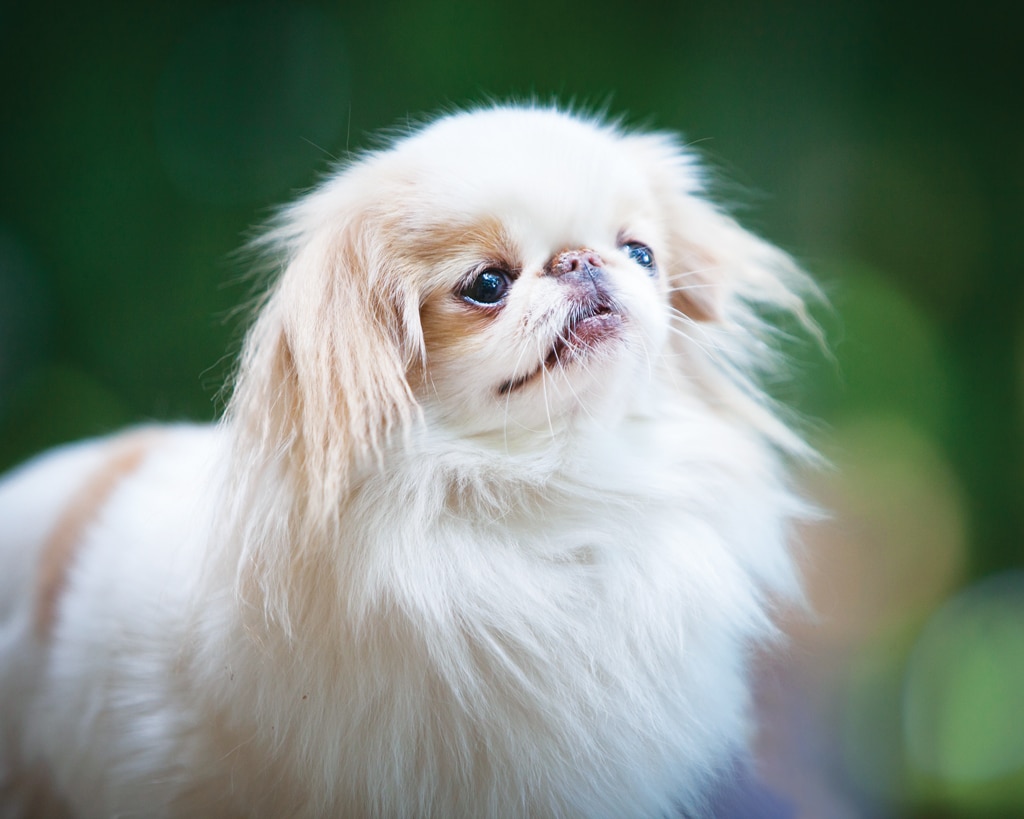
katamount/Shutterstock
Caring for Your Japanese Chin
The Japanese Chin is a single-coated breed whose coat can take a few years to fill out. Caring for and grooming this dog isn’t complicated.
Like other brachycephalic (short-faced) breeds, the Japanese Chin should not be exposed to extreme heat. Those oversized eyes can be prone to scratches and other issues. As with all purebreds, they are prone to some genetic diseases. If you’re thinking about sharing your life with a Japanese Chin, rescue or be sure to work with a conscientious breeder who is committed to health testing and producing puppies with sound temperaments.
Clever, full of affection, and utterly adorable, it’s a good thing that the Japanese Chin is no longer a breed reserved just for the upper crust. From their aristocratic beginnings to the comfort of your own lap, the elegant Japanese Chin is truly a treasure in every sense of the word.
Profile: The Japanese Chin
Size: Small
Weighs 7 to 11 pounds and ranges from 8 to 11 inches at the tallest point on the withers.
Activity Level: 2/5
Playful and loves to learn tricks. A daily walk and some playtime will keep the chin fit and content.
Grooming: 2/5
Moderate. Regular brushing and occasional bathing are all that are typically needed for this single-coated breed.
Heritage:
Originally a prized companion reserved for Japanese nobility.
For more information on Japanese Chin rescue in the U.S. and Canada, visit japanesechinrescue.org.
If you like the Japanese Chin, you might also consider the…
Pekingese English Toy Spaniel Pomeranian
The inset photos Pekingese and English toy spaniel AngieKerins / American Kennel Club; Pomeranian TomPitera / American Kennel Club
» Read Your Breed For more breed profiles, go to moderndogmagazine.com/breeds
This article originally appeared in the award-winning Modern Dog magazine. Subscribe today!
Join the newsletter and never miss out on dog content again!
"*" indicates required fields
By clicking the arrow, you agree to our web Terms of Use and Privacy & Cookie Policy. Easy unsubscribe links are provided in every email.
